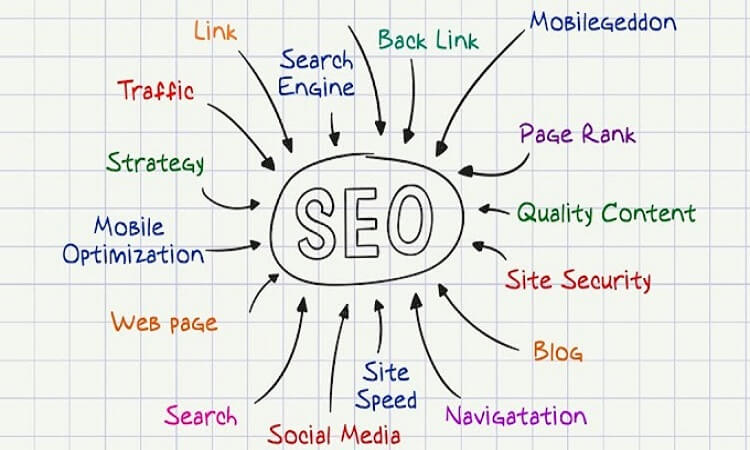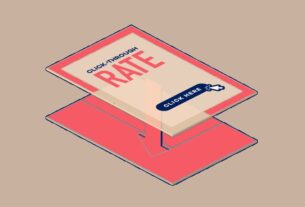SEO is one of the most important marketing strategies online. Gaining trust by implementing safe and effective SEO is the smartest investment an individual or company can do. Search Engine traffic is the most trusted source of traffic and ranking for the correct keywords on Page 1 of Google, can grow your business exponentially.
My name is Andreas Pepas and I have been practicing SEO for the last 10 years of my life. I am the founder and director of Pro Rank- SEO company in Johannesburg. This article will examine the most vital elements of SEO, and discuss each subject in detail.
TWO TYPES OF SEO
- On-Page SEO
- Off-Page SEO
OVERVIEW
- On-Page SEO is the first step of search engine optimization; it includes making specific changes to your website as well as integrating the necessary Google Tools to monitor your progress and traffic stats that arrive on your site.
- Off-Page SEO is the ongoing process of building links to drive traffic to your website, and gain trust from Google by linking to the right websites. Link building is the means of placing your website link on other relevant websites.
ON-PAGE SEO
This section will discuss the most important parts of On-Page SEO.
SEARCH ENGINE OPTIMIZATION – This includes updating your website to reflect the changes that appear on the search engines.
Meta Title
The Meta Title is the title of your website that will be displayed on search engines. Meta Titles should not exceed 60 characters and should contain your primary keyword. Your primary keyword is the most important and targeted in your SEO Campaign.
You should optimize each Meta Title of each web page of your website, and do not use the same meta title for each page as each page is different.
Meta Description
The Meta Description is the description of your site that will appear on search engines. The Meta Description must not exceed 150 characters and should include your secondary keywords. Your secondary keywords are your second most important keywords and should be mentioned naturally.
Each web page must contain a unique meta description, do not use the same meta description for another page as this will come across as spamming.
Meta Keywords
The Meta Keywords used to play a massive role in search engine optimization in the past. These days, the Meta Keywords are redundant, as Google inspects the Meta Keywords for keyword spamming and does not score SEO points to websites that utilize them.
You could leave this section blank, but if you want to add keywords make sure you add between 3-4 keywords per page. Do not add more keywords than that as you could be penalized by Google.
XML Sitemap
An XML sitemap is a vital component of SEO. Google employs spiders to crawl the web, looking for new information, web pages, and websites to index on the search engine directory. An XML sitemap provides a Map of the structure of your site with all the listed pages.
If you do not install an XML sitemap, the Google spider may miss certain pages of your site which could negatively impact your organic placements.
WEBSITE OPTIMIZATION- It includes adding and editing the content of your site to impress Google
Unique Content
Google loves unique and high-quality content. Each page of your website should contain well-written information with over 600 words per page. The more words, the better, however, do not ramble on to increase your Word Count as you do not want to bore the reader, but rather engage with them.
DO NOT DO THE FOLLOWING:
- Spun Content- Programs that re-write articles to appear unique, but often don’t make sense.
- Copy Content- Copying information from other sites is a copyright violation and a duplicate content penalty.
- Cheap Content- Google expects no grammar or spelling mistakes on your site.
Media
Google does not like blocks of text displayed on a website. It makes it difficult for readers to engage with your content. It’s important to include Images, Videos, and Icons along with your text information. You also need to consider reducing the size of images, as big-sized images can take a long to download and frustrate website visitors.
Loading Speeds
It’s important to recognize that download speeds play a crucial role in search engine optimization and website conversions. Google has made it clear it wants websites to download quickly on a user’s devices.
Slow-loading websites will not rank well on Google. Google examines the interaction between users and websites, if they find the users are getting frustrated and leaving, it displays a poor website experience. Make sure you resize images if the files are too large, as images are usually the primary reason for slow loading sites.
Make sure you test your website speed by visiting Google’s speed test
Alt Attribute
Another factor to consider is optimizing each image by adding the Alt Attribute. Many web browsers will not be able to display certain images, and the Alt Tag explains what is going on in the image. This simple change can drive traffic to your website and will improve your overall SEO Score.
Internal Linking
The Internal linking consists of links that help users navigate your website. Internal links consist of the following:
- – Standard Menu
- – Footer Menu
- – Internal Text Links
Standard Menu
This is the menu displayed at the top of your website with quick access to other pages of your site.
Footer Menu
These are links displayed at the bottom of your site that conveniently allows users to access pages of your website.
Internal Links
These are simple text links displayed throughout your website that leads users to relevant pages. If done right can play a positive impact on your organic rankings.
Mobile Compatibility
The mobile audience has exploded on the market with more and more people using cell phones. Having a mobile-friendly website is another major ranking factor. If your website does not provide a mobile alternative, you will not rank well on Google, and existing rankings may drop if you do not offer that option to your website users.
SSL Certificate and Internet Protection
The internet is swarmed with viruses, malware, and hackers. Google wants websites owners to ensure their websites are well-protected for the safety of the website visitors. It’s essential to have virus protection on your website as well as an SSL certificate. SSL certificates prevent hackers from stealing private information from website users online. Sensitive information such as ID number, baking details can be intercepted, so you must have an SSL certificate installed on your site.
GOOGLE OPTIMIZATION–This includes integrating the website with Google’s software tools
Google has a wide variety of tools you should integrate into your website. These tools help you understand what your website traffic is doing, as well as identify specific issues with your website and Google. The two most important tools to incorporate on your site are:
- Google Analytics
- Google Webmaster Tools
How To Set Up?
You need to create an account with each of the listed Google sites. Once you have set up your account, you will be required to add a snippet of code to the HTML side of your site. If you own a WordPress website, you could install a popular plugin (Monster Insights Plugin) to simplify the process and receive more information on your website stats.
OFF-PAGE SEO
The most influential factor of off-Page SEO is link building. Link building is the process of increasing your popularity online by linking to relevant websites to drive targeted traffic to your website.
This section will discuss basic link building strategies used by top SEO companies in South Africa:
1. Target Different Types of Websites
Link building should include placing your website link on several sites such as:
- Social Networks
- Forums
- Directories
- Social Bookmarks
- Blogs
- Article Sharing
- Image Sharing
- Web 2.0
2. Natural Mix of Do-follow and No-follow Sites
A backlink strategy must target both no-follow and do-follow sites. Linking from only do-follow sites can result in a Google penalty as Google wants you to build links naturally, and not manipulate its search engine.
3. Good Variation of Anchor Texts
There are two types of links:
- Text Links
- Image Links
Text Links
Text links should contain important keywords you want to rank for on Google, however, you need to use many types of anchor texts to make the process more natural. If you use the same anchor text in your link-building campaigns, you will be penalized. This is how you should structure your link building campaigns:
- – URL (40 %)
- – Company Name (25 %)
- – Primary Keywords ( 5 %)
- – Secondary Keywords (5 %)
- – Long-Tail Keywords (5 %)
- – Image Links (10 %)
- – Generic Links (10 %)
CONCLUSION
Sticking to these recommendations should assure you a safe and effective SEO strategy, for more information about search engine optimization, please feel free to visit our website at https://www.prorank.co.za



